Air Purifier Buying Guide: Which One Should You Choose?
I was never really concerned about climate change or environmental issues until a while back. I was always of the opinion that these issues need a bigger solution, probably policy level intervention. Little did I know and understand that each and every problem starts at an extremely minuscule level. Something that you and I keep doing, mindlessly, almost every day becomes mass behaviour and can culminate into something much bigger and fatal. The same is true for our climate as well.
In an age where sedentary lifestyle is more than enough to cut years off the average mortality rate, basic necessities like clean drinking water and now fresh air are becoming a challenge to obtain. I remember as a child, my father waking me up early in the morning to get a whiff of the fresh air. Mornings in my small town in Uttar Pradesh, used to be quiescent, serene with air that was fresh, pure, impregnated with a subtle scent and sound of bells coming from a temple located at a distance. It is ironic that in India, where some of the remotest corners and villages are still in need of permanent electricity and water supply, the urban areas are in need of mechanisms to purify its air.

While China is buying bottled air, could India be the next one to follow? Only we are to blame for our polluted rivers and contaminated air. According to the World Health Organisation, Delhi is the most polluted city in the world; in fact, its official report published in the year 2014 stated that 15 of 20 most polluted cities are Indian, including Mumbai, Raipur, Lucknow, Kanpur, Allahabad and so on. A recent report suggests that air pollution kills a massive 10,000 to 30,000 annually in Delhi. Pollution level refuses to climb down to the standard limit causing a host of health issues to most of us. According Dr. Vivek Nangia, Head of Pulmonology, Fortis, Delhi, elevated level of air pollution is of great concern for children, elderly as well as those suffering from diabetes, respiratory issues,allergies and chronic obstructive pulmonary disease.
Understanding air quality: Before we go on to the subject matter of this piece - air purifiers and how to go about choosing one for yourself - let us first take you through the basics of air quality and what makes the air you breathe hazardous to your health.
If you want to know the air quality of the place you are living in, you would need to refer to the air quality index (AQI). The air is tested for the particulate matter, gaseous and bacterial & viral content. Essentially, the level of particulate matter - PM 2.5 and PM 10 - as well as hazardous gases in the air determine the quality of air. The following table will make it easy to understand the concept.
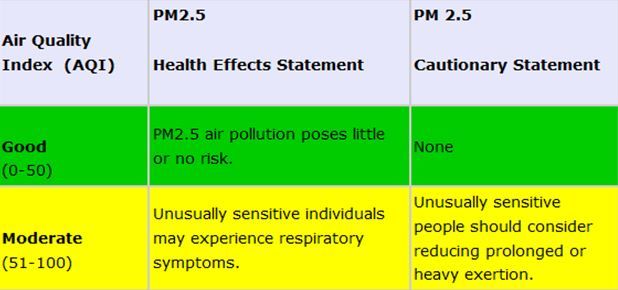
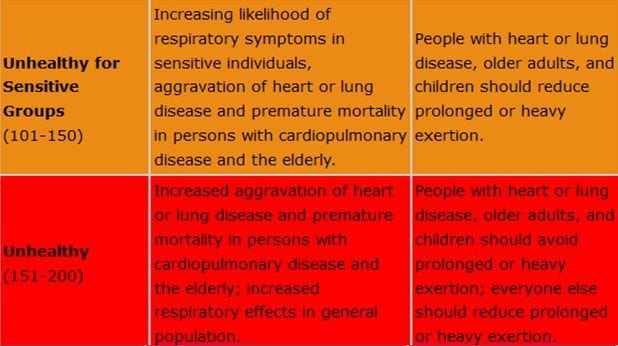
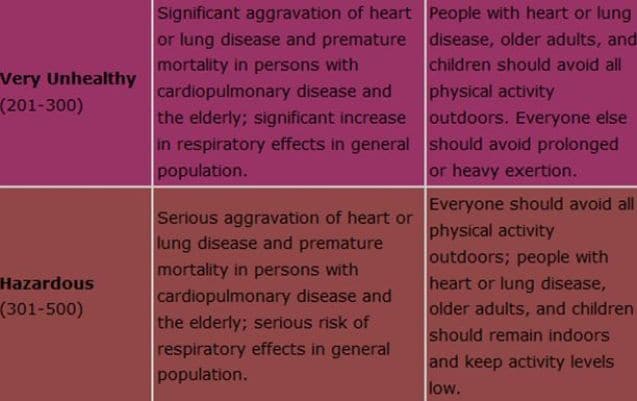
Via official site: US Embassy
So, how can one get to know about the air quality of their city? aqicn.org gives the accurate, real time AQI of a city and for that matter different areas of a particular city. I monitored the site and the AQI levels of different parts of Delhi on the site at different intervals in the day. Unfortunately, what I observed was not favourable at all. Most parts of the city had their AQI between 100 to 500. In fact, I was surprised to see that almost no metro city met the standard pollution level. The real-time AQI for Anand Vihar on 21st December at 18.00 hr was recorded as 477, Punjabi Bagh stood at 170, R.K Puram stood at 437.
The Ministry of Air Quality and Weather Forecasting and Research has a website which deals in air quality and weather forecasting. Once you log on to SAFAR India not only will it give you the air quality in cities but also a forecast. When I last checked the site, Pune was the only which managed to fall in the green zone with Delhi being much ahead on the bar shifting towards the 'SEVERE' zone.

Via official site, SAFAR India
Does an air purifier become imperative?
The answer would largely be affirmative. Bhaskar Deol, India representative, NRDC (Natural Resources Defense Council) opined, "I work with the environment sector. Recently I ran the half marathon wearing a mask, it was all black when I finished almost a couple of hours later. Air pollution is one of the leading causes of deaths in India. Not many would believe this, but it is true. I have felt my cough getting worse, it was then that I decided to get an air purifier for myself."
According to Mr. Barun Aggarwal, CEO BreathEasy, "You should have the right purifier at the right place. That is the challenge. In my opinion, it is no more a luxury, it has become a necessity. To make it cheaper and accessible to people from all walks of life, is a challenge that we have set out to overcome."
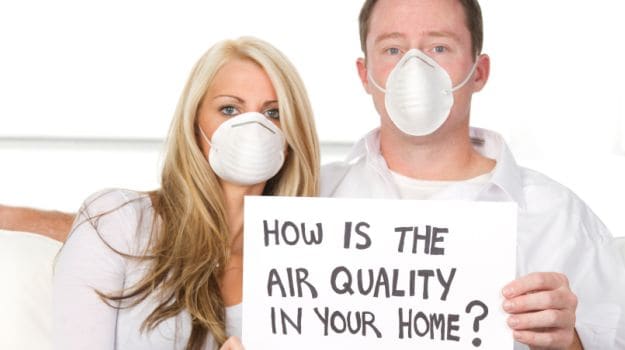
What is an air purifier?
As the name suggests, air purifier is a device which removes contaminants and pollutants from the air. It works like any filter by sucking in the air, passing it through cleaning mechanism, giving out clean air. Unlike water which is chemically treated, air is not purified chemically but filtered. The filters can be made of a range of materials but the technology differs from one purifier to another.
What to keep in mind while buying one?
"In my opinion, the preliminary step for anybody who aims to buy an air purifier would be to self-educate. It is not like water filters or air-conditioners where you won't have to think much before investing. Think about your needs, educating and reading up on pollution and doing your own research before heading out to buy one is imperative," noted Bhaskar.
"I feel that air purifiers are fairly simple machines to understand. There has not been much publicity and education about them that's why an average consumer feels baffled when thinking to buy one. All you need to factor in while making a choice would be (a) the place where you want it to be fixed and hence the size of the machine (b) your budget (c) how economical the machine would be in the longer run (need to change the filters, size of the filter) and of course the technology - your machine need not have anything fancy and superfluous features but three basic things - a basic pre-filter, an activated carbon layer and a HEPA filter," shared Mr. Barun Aggarwal.
The Thumb Rules
1) Look for a pre-filter - Indian conditions are such that the air has heavy particulate matter, therefore, your machine should have a pre-filter to filter out these particles. Presently PM 10 and more importantly, PM 2.5, are monitored to be quite high in most Indian cities. It is important for your purifier to filter these out.
2) Activated carbon layer - is the next thing you should be looking for in your machine. Activated carbon is a porous element which easily sucks in most gaseous contaminants.
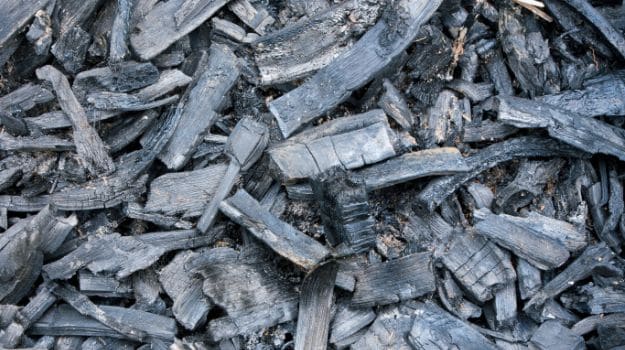
3) HEPA filter - consider your machine trash if it doesn't come with a good quality HEPA filter. According to the US department of Energy, HEPA (High Energy Particulate Air) can/must remove at least 99.97% of 0.3 micrometers airborne pollutants.
4) Say no to ozone emitting devices - Steer clear of any technology in a purifier that emits ozone. According to EPA, (US Environmental Protection Agency), even "relatively low amounts of ozone can cause chest pain, coughing, shortness of breath and throat irritation." Consumer Reports published in the year 2002/03 stated the fact that ionizing air purifiers gave almost, "no reduction in airborne particles". According to EPA, ionizing and ozone air purifiers can be hazardous to health.
5) Technologies to avoid - UV filtration, ionization and photocatalytic oxidation are a set of technologies you should not be looking for in your purifier. Some of these emit ozone whereas the rest are capable of targeting bacteria which can create too sterile an environment, therefore affecting your immunity level.
6) Look for the CADR (Clean Air Delivery Rate) on your machine - A higher number will be indicative of better filtration. There will be three CADR numbers listed on your product, forsmoke, dust and pollen respectively. Also, it is important to know at what speed (of the fan) is your filtration certified. If it is mentioned on high speed, it is bound to create lots of noise. Your purifier is efficient if it cleans and purifies effectively at the low or medium fan speed.
7) The right filter - Quality and size of filters should always be taken into consideration. If your filter gets clogged easily it will require frequent replacement which will not be cost effective.
8) Make smart choices - Access your needs and see how big the room is which needs purification. Central purification will need bigger machines or purifiers to be fitted as a part of the central cooling, heating and ventilating system (HVAC). "I bought a slightly bigger model for myself than my room would require because I want it to work efficiently even on low speed. Also, I was also mindful of the fact that I may be moving in the near future, in which case I might have a larger room to myself and would require a bigger machine," shared Mr. Deol. You don't really invest in such appliances again and again, it is like a one-time investment for years, so you ought to factor in your present needs as well as your ever expanding, prospective requirements.
9) What else to keep in mind? - Ideally, your purifier should not produce more than 30-35 db sound. Depending on various machines, a purifier takes from 10 minutes an hour to purify your air. You need not switch on your purifier the entire day. If your machine has a timer, time it to switch itself on an hour before you plan to be home. In case you stay home most of the time, you can leave it switched on without worrying much (these machines are light on energy consumption, for example, Philips AC4041 consumes 30 watts - but that way your filter may run out quickly. However, you can switch them off during afternoon as this time of the day has better air quality as compared to mornings or nights. You must let the indoor air change as well every noon. Make sure you clean your house regularly. Dusting should be avoided rather use wet cloth to clean surface areas, plants and objects.
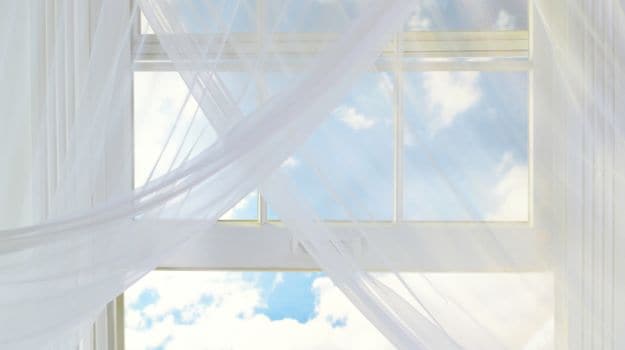
Make sure you clean your house regularly. Dusting should be avoided rather use wet cloth to clean surface areas, plants and objects. Ventilation is important. Afternoon is the best time to throw your doors and windows open and let the air change. In case you need one, you can opt for a purifier with a humidifier. Air purifiers start from around 15-20,000/- and go up to lakhs. Choose the one that fits your needs and budget.
What are your options?
There a range of companies manufacturing air purifiers these days, some of them would include, Panasonic, Phillips, Blueair, IQAir, Sharp, Breath Air, Daikin, Camfil and many more. You can choose one for yourself keeping in mind the points mentioned above. However, if market sale and expert opinion are to be taken into account, there are a few brands that really stand out in the business when compared to the rest.
Sharp - has some excellent machines when it comes to air purification across varied price range. A couple of models that you can consider would include Sharp FP-F4OE-W priced at 24, 990/- and FU-A8OE-W priced at 32,990/-.
Camfil - This Swedish company has probably the best and the most efficient air purifiers. Though the brand has high-end models for which you might have to shell out slightly more, but it will be an investment you certainly won't regret. Camfil purifiers come with an exclusive molecular filtration technology which claims to remove almost all hazardous gases.
IQAir and Blueair have an efficient range of models to choose from. IQAir's HealthPro series is especially designed for asthmatics and those who suffer from allergies. The MultiGas range is efficient in eliminating most odours and smoke. They even have whole-house purifiers.
Blueair on the other hand, has some really efficient high-end models. However, for those looking out for a basic yet effective machine that would come with minimal expenditure, the classic 270E model would suit the requirements.
Phillips - This brand has some of the most stylish models that range between 16,000/- to 40,000/- If you are tight on budget AC4025/10 would be your best bet. Add another 10,000/- and you will get the better AC4014/10 and AC4081/21. However the best model that Philips has to offer would certainly be the slightly expensive one AC4372/10 priced at 42,495/- You can easily buy carbon filters as well as HEPA filters for around 3,000/- and other accessories as well.
From the Expert's Table: Barun Aggarwal CEO, Breathe Easy, the Pollution Solution claims that their lab has tested most of the major air purifier manufacturing brands. "BreatheEasy is India's first full service Indoor Air Quality solution provider. We have been pioneers in the Indoor Air Quality space for the last 25 years having fixed the indoor air in our own building in Nehru Place, New Delhi. It has been rated as one of the healthiest buildings of Delhi by the Central Pollution Control Board (CPCB), Govt of India and also been tested to have very good air by Lawrence Berkeley National Labs (LBNL), California."
Having tested almost every brand Mr. Aggarwal noted the most efficient air purifying brands to be Sharp and Camfil. "Camfil's molecular filtration sets it apart from rest of the brands in the business. Philips has some really good high-end models that one can consider buying. Sharp has been consistently good overall."
"We deal in air purifying solutions, hence we won't recommend something that is not up to the mark when it comes to efficacy and value for money. Why most others brands failed our test was because of the technology they used (negative ionization, ozone emission, UV filtration and so on) or because most were designed for countries where the air quality is much better unlike India where you find very dense and high particulate pollutants - PM 2.5."
Our Bit- Vehicular pollution adds much to the problem. You can ensure a thick green cover around your home or residential area to mitigate pollution. There are multiple ways through which one can purify air at home. Indoor plants like money plant, snake plant, bedroom plant (sansevieria trifasciata) and areca palm plant are excellent in purifying indoor air. Bedroom plant, as the name suggests, is ideal to be kept in your bedroom as it is capable of emitting oxygen at night.
While most see no way out but to buy an air purifier, it will be of a little help in solving the macrocosmic problem. "You and I can install air purifiers in our homes and offices but if we are adding to the ever increasing numbers of diesel vehicles, we aren't really addressing the issue at large," noted Mr. Deol.
No comments:
Post a Comment